EPS Prefab Houses: A Guide
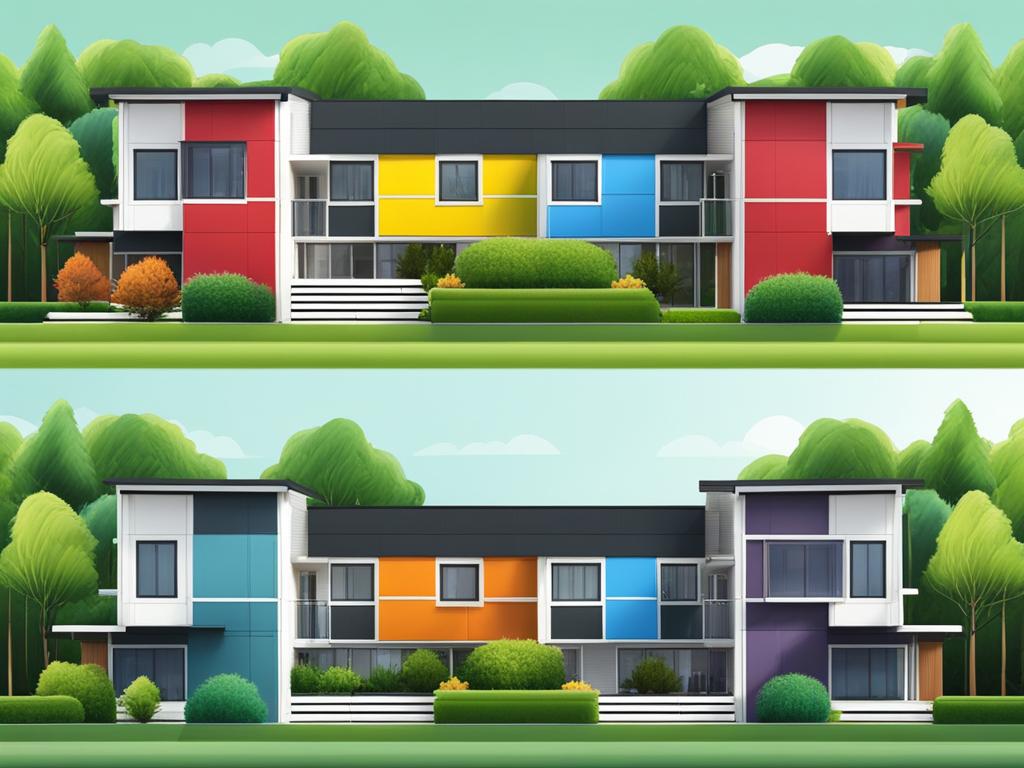
In today’s fast-paced world, the demand for energy-efficient, sustainable, and affordable housing is on the rise. EPS prefab houses, also known as modular houses, are quickly gaining popularity as a convenient and eco-friendly solution. These pre-engineered houses are constructed using an Expanded Polystyrene (EPS) core panel system, combining durability, efficiency, and style.
The EPS panels consist of a 3-dimensional welded wire space frame with a polystyrene insulation core, making them an ideal choice for both load-bearing and non-load-bearing elements. Apart from their quick assembly and reduced construction costs, EPS prefab houses offer numerous advantages to homeowners.
Key Takeaways:
- EPS prefab houses provide energy-efficient and sustainable living options.
- They offer quick assembly and reduced construction costs.
- EPS prefab houses come in various designs, allowing for customization.
- These eco-friendly buildings contribute to a lower environmental impact.
- EPS prefab houses are durable and can withstand various weather conditions.
Introduction to EPS Core Panel System
The EPS core panel system is a versatile and innovative construction method that is gaining popularity in the industry. This system utilizes 3-dimensional welded wire space frames with a polystyrene insulation core, providing a strong and efficient building solution.
One of the key components of this system is the use of 3D panels, which consist of welded reinforcing meshes and diagonal wires. These panels are filled with self-extinguishing expanded polystyrene uncoated concrete, creating a lightweight yet durable structure.
EPS core panel system is suitable for both load-bearing and non-load-bearing elements in buildings, offering flexibility in design and construction. The panels can be easily customized to meet specific architectural requirements.
The construction process involves the assembly of the panels on-site, followed by the application of shotcrete to provide additional structural strength. The result is a fast and efficient building system that offers superior thermal and sound insulation properties.
The use of the EPS core panel system offers several advantages. Firstly, it allows for quick and efficient construction, reducing both time and labor costs. Secondly, the polystyrene insulation core provides excellent thermal insulation, promoting energy efficiency and reducing heating and cooling costs.
Furthermore, the system’s welded wire space frame offers enhanced stability and durability, ensuring the longevity of the building. The lightweight nature of the panels also contributes to easier transportation and installation.
In summary, the EPS core panel system is a cutting-edge construction method that combines the use of 3D panels, welded wire space frames, and polystyrene insulation to create a strong, efficient, and sustainable building solution. This system offers numerous benefits, making it an attractive option for various construction projects.
Benefits of EPS Prefab Houses
EPS prefab houses offer a range of benefits for homeowners looking for energy-efficient homes, sustainable construction, and affordable housing.
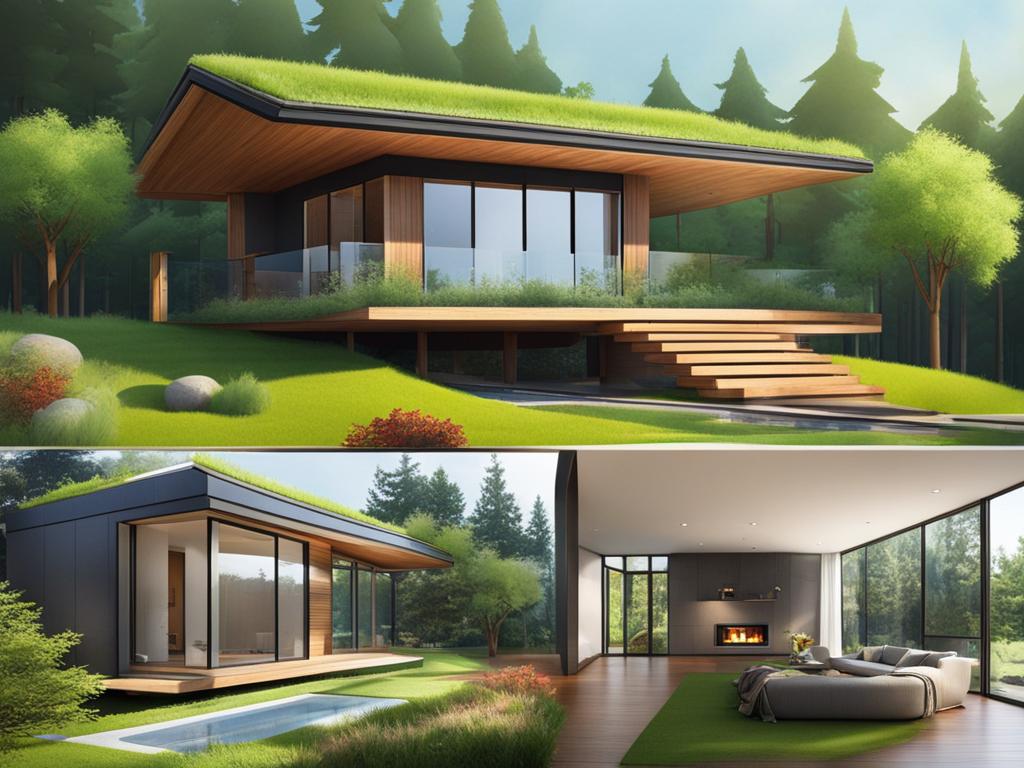
Energy Efficiency: One of the key advantages of EPS prefab houses is their energy efficiency. These homes provide high levels of thermal insulation, keeping the interior temperature comfortable and reducing the need for excessive heating or cooling. The EPS panels used in prefab construction help to minimize heat loss, resulting in lower energy bills and a reduced carbon footprint.
Sustainable Construction: EPS prefab houses are a sustainable choice for eco-conscious individuals. The materials used in the construction of these homes, such as the EPS panels, can be recycled, promoting a circular economy. Additionally, the construction process produces minimal waste, contributing to a greener and more environmentally friendly building approach.
Affordable Housing: EPS prefab houses offer a cost-effective solution for those seeking affordable housing options. Compared to traditional stick-built homes, EPS prefab houses often have reduced construction costs and shorter build times. This affordability makes them a viable choice for individuals and families looking to achieve their dream of owning a home without breaking the bank.
Quick Assembly: One of the standout features of EPS prefab houses is their quick assembly. The pre-made EPS panels streamline the construction process, allowing for efficient and timely assembly. With shorter construction times, homeowners can move into their new homes sooner, avoiding long waiting periods typically associated with traditional construction methods.
Eco-Friendly Buildings: EPS prefab houses contribute to the creation of eco-friendly buildings. The energy-efficient design, use of recyclable materials, and reduced waste generation make them a sustainable choice for environmentally conscious individuals. By opting for an EPS prefab house, homeowners can enjoy the benefits of a comfortable and stylish living space while minimizing their impact on the environment.
Types of Prefab Houses
When it comes to prefab houses, there are various options available to suit different preferences and needs. From luxurious villas to compact tiny houses, each type offers its own unique advantages and design features.
Villa Design
If you’re looking for a spacious and luxurious home, villa design prefab houses are a perfect choice. These houses are known for their grandeur and high-end features, offering ample space for large families or those who enjoy entertaining.
Row House
For those who value energy efficiency and want to make the most of limited lot space, row houses are an excellent option. These houses can be customized to maximize space utilization and often feature sustainable design elements.
Cabin Design
If you dream of having a vacation home in a scenic location, cabin design prefab houses can turn that dream into reality. These houses are designed to blend seamlessly with nature and provide a cozy and rustic retreat for relaxation and rejuvenation.
Tiny House
For those who prefer a simpler lifestyle or are conscious of their environmental footprint, tiny houses offer an ideal solution. These houses are minimalistic in design, providing all the essentials in a compact and efficient space.
Modular Home
Modular homes are assembled on-site using pre-manufactured modules. This construction method allows for flexibility in design and quick assembly. Modular homes can be customized to meet individual preferences and are known for their versatility.
Panelized Home
If you crave open spaces with high ceilings and enjoy customization options, panelized homes are worth considering. These houses are constructed using prefabricated panels that can be easily assembled and offer a seamless blend of modern design and functionality.
Precut Home
For those who enjoy DIY projects, precut homes come in kits that allow you to build your dream home step by step. These kits typically include pre-cut components, making the assembly process more accessible for homeowners who want to be hands-on with their construction project.
Shipping Container Home
For a unique and environmentally-friendly design, repurposed shipping containers are used to create functional and innovative living spaces. Shipping container homes offer an affordable and sustainable solution, combining creativity with resourcefulness.
With such a wide variety of prefab house options available, there is something to suit every taste and lifestyle. Whether you’re looking for a spacious villa, a compact tiny house, or an eco-friendly shipping container home, prefab houses offer stylish and efficient living solutions.
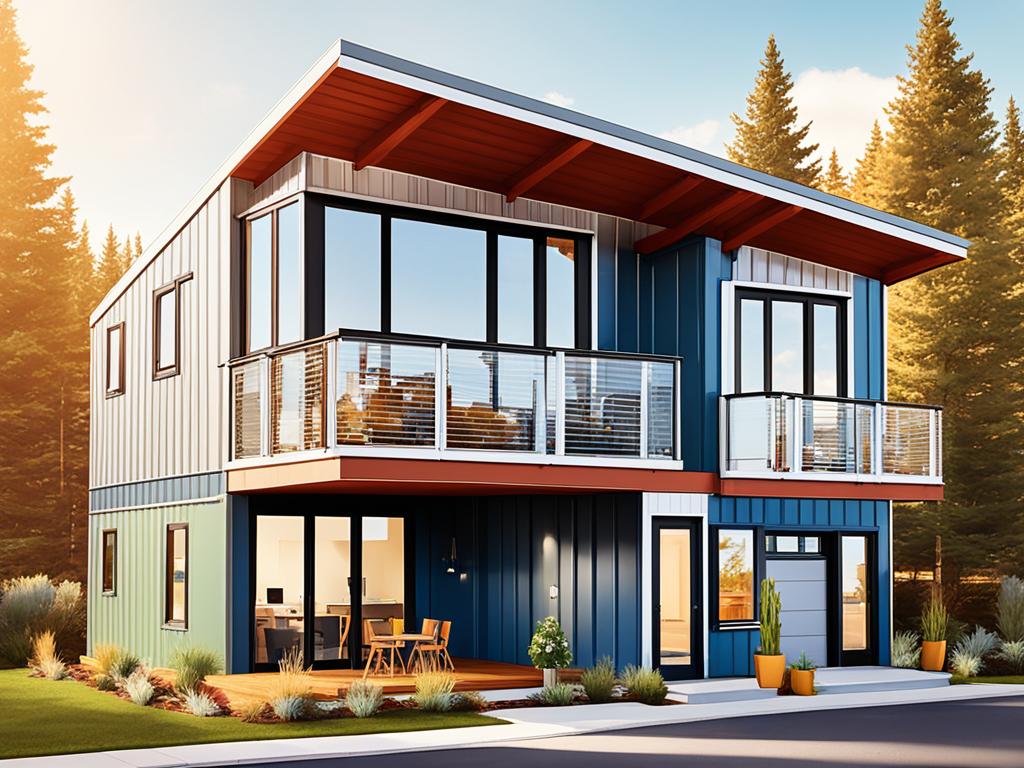
Cost of EPS Prefab Homes
The cost of EPS prefab homes can vary based on several factors, including the size, design, customization options, and location. On average, a simple prefab home can cost around £100,000, while a custom-made prefab home can range from £200,000 to £300,000.
In addition to the initial cost of the home itself, there are other expenses to consider. Construction costs will depend on the complexity of the project and can range from £50,000 to £160,000. These costs cover the preparation of the site and the assembly of the prefab components.
Delivery costs are also an important consideration. The cost will vary depending on the distance between the manufacturing facility and the construction site, as well as the size and weight of the prefab elements. It is recommended to obtain a quote from the manufacturer to accurately assess delivery costs.
Installation costs are another factor to keep in mind when budgeting for an EPS prefab home. These costs cover the labor required to assemble the prefabricated components on-site, including any necessary additional work such as plumbing and electrical installations.
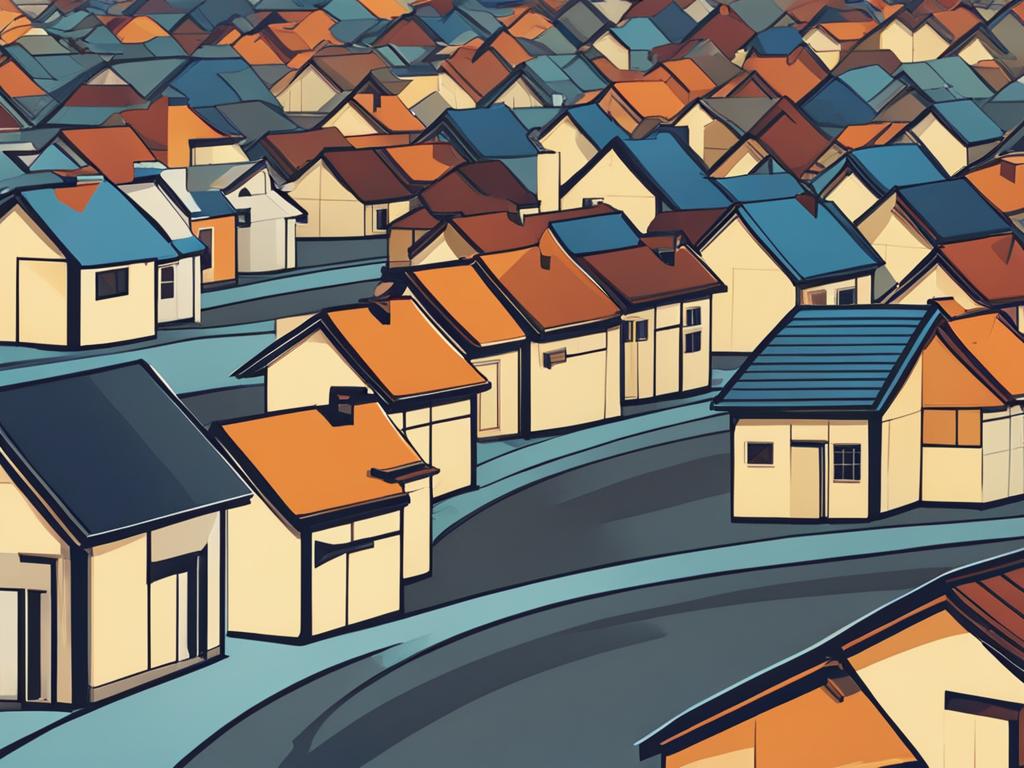
Factors Affecting the Cost of EPS Prefab Homes:
- Size of the home
- Design complexity
- Customization options
- Location
Getting Started on Your Prefab Home
When it comes to building your dream prefab home, there are a few important steps to get started. With the help of experienced prefab home manufacturers, you can ensure a smooth and successful process.
Contacting Prefab Home Manufacturers
The first step is to reach out to reputable prefab home manufacturers. They have the expertise and knowledge to guide you through the entire process. Whether you have a specific design in mind or need assistance with customization options, they can provide valuable insights and recommendations.
Site Preparation
Once you have chosen your prefab home manufacturer, the next step is site preparation. This includes clearing the land where your home will be built and ensuring the foundation is properly prepared. It is also important to ensure that utilities, such as water and electricity, are in place before the construction process begins.
Permits and Fees
Before construction can commence, it is essential to obtain the necessary permits and pay any required fees. This ensures that your prefab home complies with local regulations and guidelines. Working closely with your prefab home manufacturer, they can assist you in navigating the permit process and handling any associated fees.
The Construction Process
Once the site is prepared and permits are obtained, the construction process can begin. The prefab home components will be delivered to your site, ready for installation. Expert construction teams will assemble and install the components, ensuring precision and quality every step of the way. Finally, finishing touches will be added to complete your prefab home.
It is important to remember that working with trusted prefab home manufacturers and following local regulations are essential for a smooth and successful project. By taking these steps, you can ensure that your prefab home construction process is efficient, stress-free, and results in the home of your dreams.
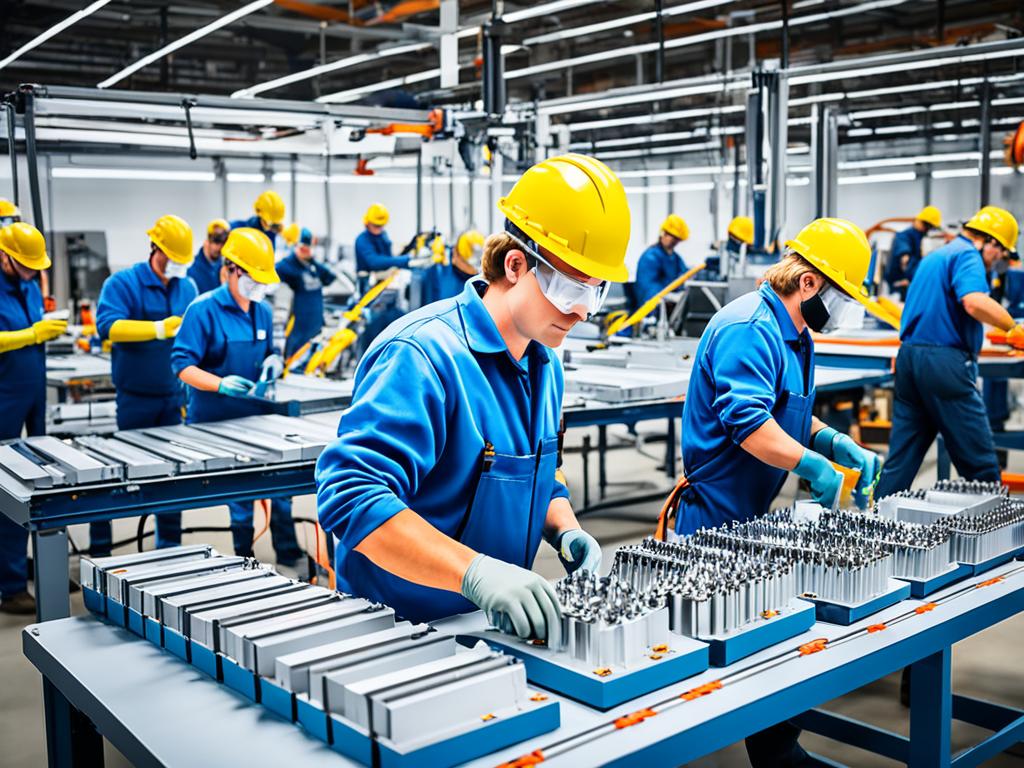
The Advantages of EPS Prefab Homes
In today’s world, where energy efficiency and sustainability are paramount, EPS prefab homes offer a remarkable solution. These homes come with numerous advantages that make them a popular choice for homeowners.
Energy Efficiency
One of the key advantages of EPS prefab homes is their energy efficiency. These homes are designed with high levels of thermal insulation, ensuring that heat is retained during winter and kept out during summer. The result is a comfortable living space that requires less energy for heating and cooling. Additionally, EPS prefab homes also provide excellent sound insulation, creating a peaceful and quiet interior environment.
Quick Construction
When it comes to building a home, time is often a critical factor. EPS prefab homes are known for their quick construction process. The EPS panels used in these homes are pre-made and can be easily assembled on-site. This significantly reduces construction time compared to traditional stick-built homes. As a result, homeowners can enjoy their new living space in a shorter timeframe.
Cost Savings
EPS prefab homes offer cost savings in multiple ways. Firstly, the quick construction time translates to lower labor costs. Additionally, the efficient manufacturing of the EPS panels results in reduced material waste, which contributes to overall cost savings. Furthermore, the energy efficiency of these homes leads to lower utility bills over time, adding to the financial benefits of owning an EPS prefab home.
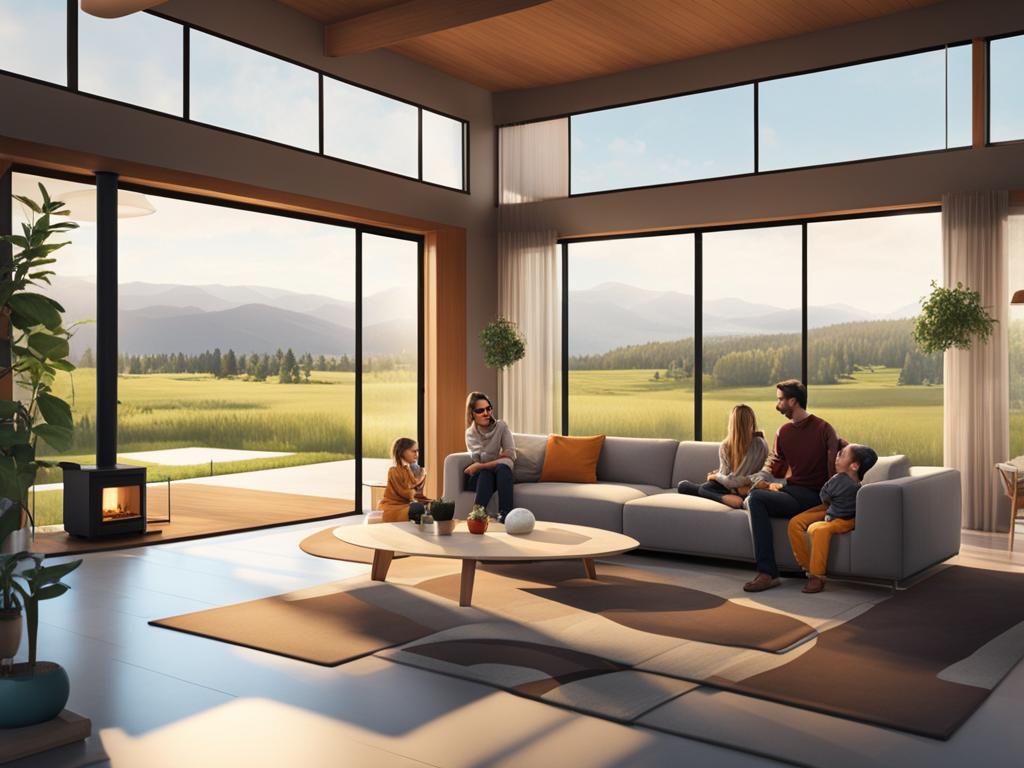
Customization and Durability
EPS prefab homes provide homeowners with a range of design options. These homes can be customized to meet individual preferences, allowing for a personalized living space. Moreover, EPS prefab homes are known for their durability. The EPS panels used in construction are strong and can withstand various weather conditions, ensuring that the home remains resilient through the years.
Eco-Friendly Construction
As sustainability becomes increasingly important, EPS prefab homes offer an eco-friendly solution. The construction process produces minimal waste, reducing the environmental impact. Additionally, the materials used in EPS prefab homes can be recycled, promoting a circular economy. By choosing an EPS prefab home, homeowners contribute to a greener future.
Conclusion
EPS prefab houses offer a sustainable and efficient solution for those looking for affordable and stylish homes. With their energy-saving features, quick assembly, and eco-friendly construction, EPS prefab houses are becoming a popular choice for homeowners in the United Kingdom. Whether it’s a villa, row house, cabin, or modular home, EPS prefab houses provide a range of options for sustainable living.
One of the key advantages of EPS prefab houses is their reduced construction costs, making them an attractive option for those seeking affordable housing solutions. Additionally, these homes offer improved energy efficiency, allowing homeowners to minimize their environmental impact while benefiting from lower energy bills.
By choosing EPS prefab houses, individuals can embrace sustainable living and contribute to a greener future. The construction process is quicker compared to traditional homes, allowing homeowners to move in sooner and enjoy their energy-efficient homes. With a variety of design options available, individuals can customise their EPS prefab houses to suit their unique preferences and needs.
For those in the United Kingdom looking for a modern and environmentally-friendly housing solution, EPS prefab houses offer a compelling choice. From reduced construction costs to improved energy efficiency, these sustainable homes provide a pathway to affordable living without compromising on style or comfort.
FAQ
What is an EPS prefab house?
An EPS prefab house is a building constructed using the EPS core panel system, which consists of 3-dimensional welded wire space frames with a polystyrene insulation core. The panels are used for both load-bearing and non-load-bearing elements in the construction of the house.
What are the benefits of EPS prefab houses?
EPS prefab houses offer reduced construction costs and time, energy efficiency, durability, and a range of design options. They are also eco-friendly and provide excellent thermal and sound insulation.
What types of prefab houses are available?
There are various types of prefab houses, including villa design for luxurious and spacious homes, row houses for energy efficiency and limited lot space, cabin design for vacation homes, tiny houses for a simpler lifestyle, modular homes manufactured in modules, panelized homes with customization options, precut homes for DIY assembly, and shipping container homes with repurposed shipping containers.
How much does an EPS prefab home cost?
The cost of an EPS prefab home varies depending on factors such as size, design, customization, and location. On average, a simple prefab home can cost around 0,000, while a custom-made prefab home can range from 0,000 to 0,000. Additional costs for building, delivery, and installation may apply.
How do I get started on building an EPS prefab home?
To get started, you can contact prefab home manufacturers who will guide you through the process. Site preparation involves clearing the land, preparing the foundation, and ensuring utilities are in place. Permits and fees may be required. The construction process involves the delivery of prefab home components, installation, and finishing touches.
What are the advantages of choosing an EPS prefab home?
EPS prefab homes are energy-efficient, quick to construct, cost-effective, durable, and eco-friendly. They offer high levels of thermal and sound insulation and can withstand various weather conditions.
Are EPS prefab houses sustainable?
Yes, EPS prefab houses are sustainable. The materials used in their construction can be recycled, and the construction process produces little to no waste. They also have lower environmental impact compared to traditional construction methods.
Why should I choose an EPS prefab house?
EPS prefab houses offer a sustainable and efficient solution for affordable and stylish homes. With their energy-saving features, quick assembly, and eco-friendly construction, they provide a modern and environmentally-friendly housing option.

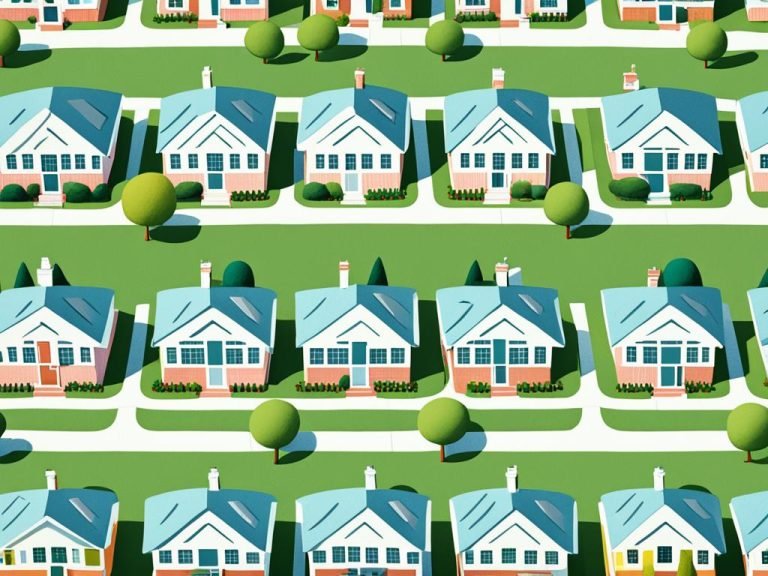


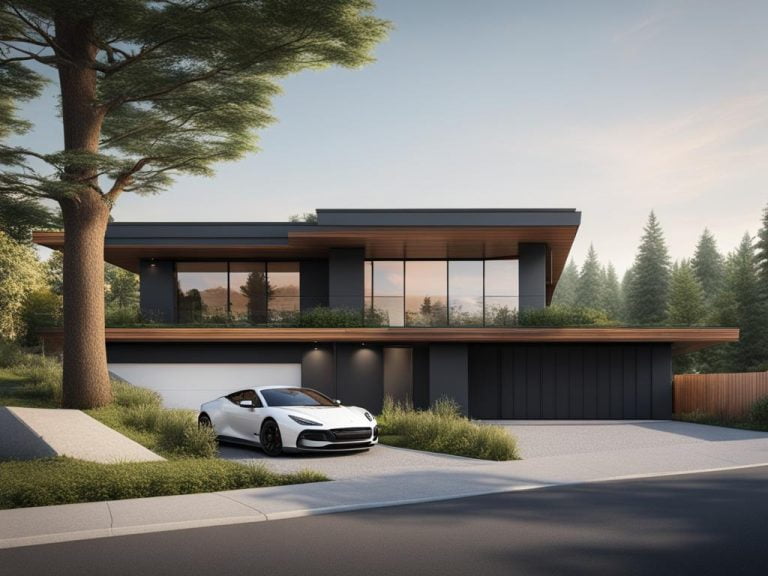
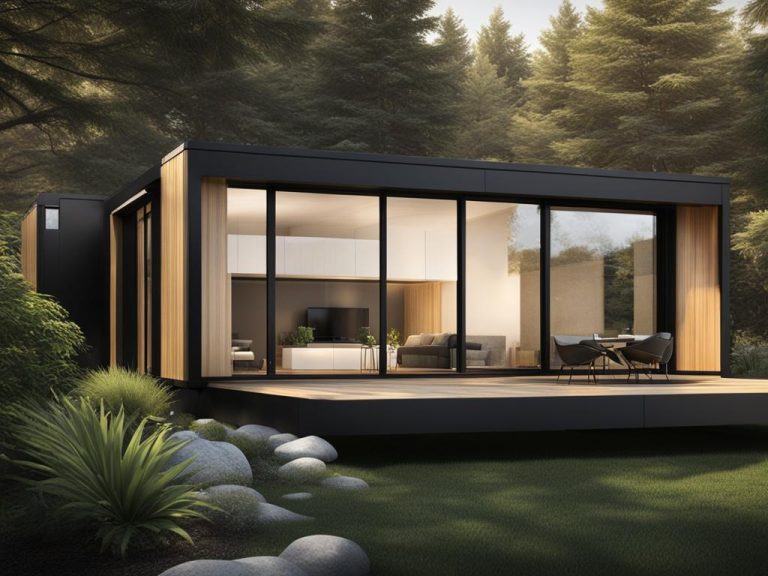
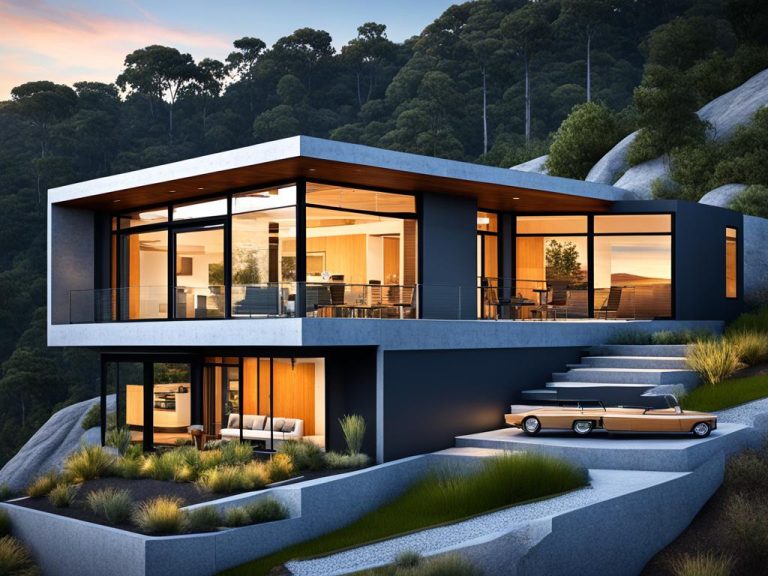
priligy in usa However, although physiological theory and the results of animal models consistently support the conclusion that furosemide and albumin co administration could increase the secretion of active form of furosemide in the renal tubular lumen 1 3, 5, 6, the evidence from clinical trials supporting such co administration has remained ambiguous